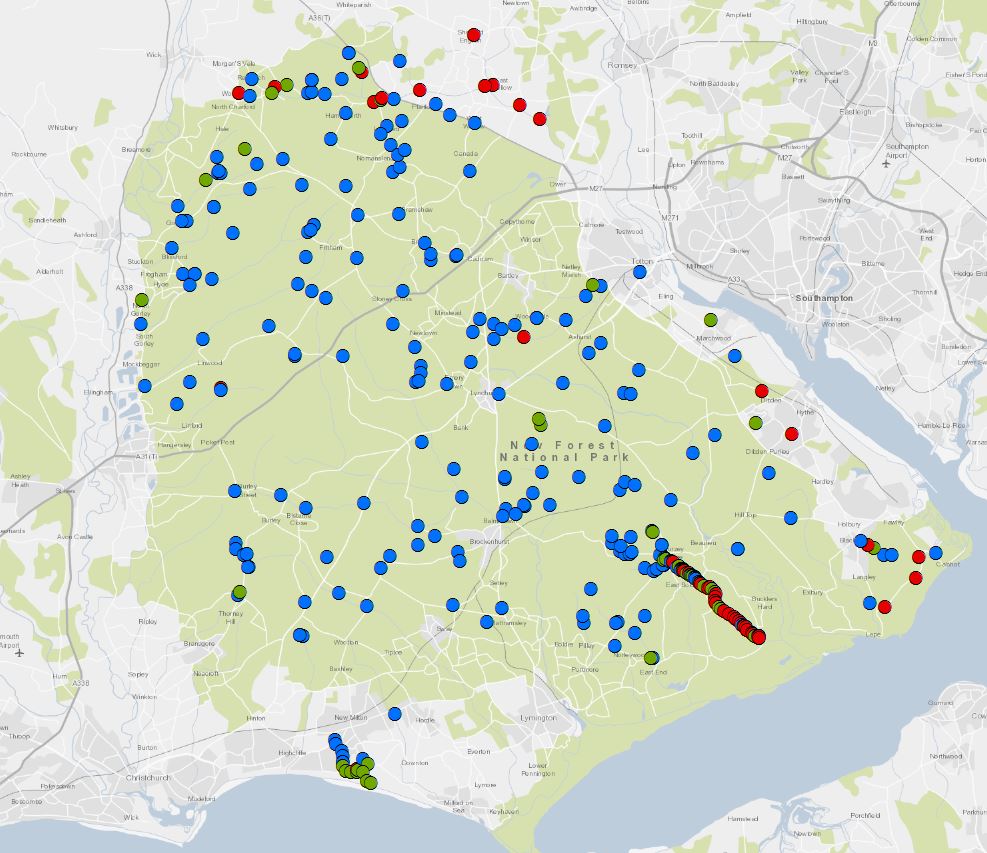Clean Water for Wildlife
16th May 2016
Over the next few months we will be bringing you results from the Clean Water for Wildlife project. Thanks to a grant from the Heritage Lottery Fund and Thames Water, we’ve been running this nationwide survey to find out about the extent of nutrient pollution in freshwater habitats – ponds, lakes, rivers, streams and ditches.
Freshwater wildlife needs clean unpolluted water to survive. Sadly, it only takes a little pollution to damage habitats like streams and ponds, and to harm the most sensitive plants and animals that call these places home.
With your help, the Clean Water for Wildlife survey aims to find the hidden gems – places which are free from pollution and where wildlife still thrives. The survey also aims to discover for the first time, the true extent of nutrient pollution facing freshwater wildlife today.
We launched this part of the People, Ponds and Water project in March this year with a series of WaterBlitz events. The aim was to collect water quality data from across landscape areas, sampling different types of habitat to get an overall picture of water quality.
Here we present the first batch of results from the New Forest, Hampshire.

The New Forest is unusual in lowland England in having large areas of uncultivated land (the open forest), managed for centuries by a traditional commoning economy. Due to its unique nature the New Forest it is one of the best places to see rich and near-natural freshwater habitats in the UK, a fact widely recognised by the high level of protection given to the landscape.
There are more than 30 separate rivers and streams, and dozens of smaller headwater streams, which rise on the Forest and flow outward to the sea. These range from larger rivers and their tributaries, such as the Avon, Test, Lymington and Beaulieu to shorter streams and brooks such as the Sowley Stream, Jacobs Gutter, Beckton Bunny, Dark Water and Walkford Brook.
There are also an estimated 800–1,000 ponds in the New Forest, ranging from ephemeral pools on the edges of trackways, to large bodies of permanent water and lakes such as Hatchet and Sowley Ponds. These waterbodies support outstanding communities of plant and animal species.
Despite their importance, very few of these waterbodies are regularly monitored and we know little about levels of nutrient pollution across this landscape. Of the 30 or so ‘river water bodies’ which are regularly monitoring by the Environment Agency, most monitoring takes place in the downstream sections of the rivers, on the edge of the Forest, and we lack information from the headwaters.
We aimed to cover as many freshwater habitats as possible over a four week period from the 12th March to the 10th April. Volunteers used the Clean Water for Wildlife ‘quick test’ kits, allowing us to ‘see’ and record nutrient pollution.
Over 50 volunteers signed up to the WaterBlitz, including: staff, members and volunteers from the New Forest National Park Authority, New Forest Association, New Forest Study Group, Blackwater Valley Conservation Volunteers, Parish Councils, New Forest Catchment Group, Land Advice Service, Hampshire and Isle of Wight Wildlife Trust, and our own New Forest Flagship Group volunteers. We also had volunteers who heard about the project at the New Forest Volunteer fair. We’d like to say a huge thank you to everyone who’s taken part so far.
Volunteers visited and collected water data from an impressive 400 sites over our four week survey window – and the results have blown us all away!!

The majority of results returned from the New Forest have been clean water sites. In fact the kits showed almost no colour change at all, and some volunteers were beginning to think their kits weren’t working.
We aren’t surprised because in this semi-natural landscape there are few sources of nutrient pollution. The results also confirm just how important this area is for freshwater wildlife and why it supports such a large number of sensitive plant and animals that have become rare in most other landscapes.
To put these results in context, this isn’t the picture we’re seeing elsewhere in lowland England – excess nitrates and phosphates, from agricultural fertilisers, discharge from waste water treatment works and run off from the drainage network are present in almost all the freshwater habitats we’ve tested.

These impacts go hand in hand with industrial agricultural landscapes and urban areas. Even in the New Forest we can see that outside of the protected area there is a halo of samples which are showing evidence of nutrient pollution. It helps to highlight just how special the New Forest is, and is more evidence that we need to take steps to protect this area from impacts along its boundary.
Again we’d like to thank all the volunteers who’ve taken part in the New Forest Water Blitz so far.
The good news is that we’d like to carry on filling in the gaps on the map to get an even more complete picture of water quality here. So, the survey will now continue until at least the end of May.

Get involved in Clean Water for Wildlife
There are still lots of opportunities to get involved in the project, both in the New Forest and elsewhere. If you’d like to know more about what’s involved, take a look at our video.
Find out more about Clean Water for Wildlife on our website and email the team on peoplepondswater@freshwaterhabitats.org.uk to get involved.
Share your Clean Water for Wildlife adventures with us on social media with the hashtag #cleanwaterforwildlife.
